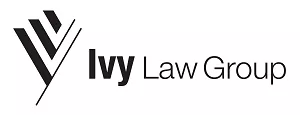In response to the increasing level of family violence to which families and children are being exposed, in early 2021, the Federal Circuit and Family Court of Australia (FCFCOA) introduced the Lighthouse Project, designed to screen those at risk of family violence and devise special pathways to help improve outcomes for those families going through the Family Courts. The Court has extended the project to include matters that have both a financial and a parenting element, as opposed to parenting only, meaning that more families are able to benefit. Here's what you need to know.
What's new?
As detailed in our initial lighthouse project article, the service was initially piloted in Adelaide, Brisbane and Parramatta for parenting only matters. The FCFCOA has recently announced that they have expanded the number of registries offering the service to include the following:
- Adelaide
- Brisbane
- Cairns
- Canberra
- Dandenong
- Darwin
- Hobart
- Launceston
- Melbourne
- Newcastle
- Parramatta
- Rockhampton
- Sydney
- Townsville
- Wollongong
This means that families who are filing or responding to either a family law parenting only matter or a parenting and financial matter in any of the above listed registries, are eligible to undertake the family violence risk screening.
How does the screening process work?
The screening process involves completing an online questionnaire called the 'Family DOORS Triage Questionnaire.' This will give you an opportunity to self-identify risk. It is important to note that the questionnaire will only be provided once you have filed an eligible Initiating Application or Response. You will be provided with the link to the questionnaire by the Court within 2 business days of filing and you will have 10 days to complete it.
Any information supplied to the Court by way of the screening process, including any disclosures or admissions of family violence, will not be admitted into evidence or utilised in your family law matter. The process is completely confidential, so much so that whether you chose to participate in the screening will also not be disclosed in your family law matter, nor can you be asked to disclose to the Court whether you have engaged in the process.
Your responses will only be seen by the Lighthouse Team and associated court personnel who may thereafter be involved in your triage interviews or counselling. Your answers will not be seen by the Judge, Judicial Registrar, other parties or legal representatives involved in the case.
How are at-risk cases of family violence assigned?
Your matter will be referred to different pathways depending on the level of risk you face. For example, high risk matters are referred to a team who will assess their suitability for the case management pathway offered by the Evatt List; while medium and lower risk cases will be considered for a range of other case management pathways, including dispute resolution.
You can find out more about what's involved in each of these processes in our initial lighthouse article.
Your responses to the questionnaire will then be assessed by Court employed experts and you will receive one or more of the following:
- A response by the Court to serious risk issues, including conducting triage interviews to better understand the risks in each individual case;
- online safety planning if this is required in your case;
- referrals by the Court to appropriate legal and social support (if necessary); and
- placement on the most suitable case management pathway.
If you would like more information about risk screening and what it involves, the Federal Circuit and Family Court of Australia has a fact sheet available.
The content of this article is intended to provide a general guide to the subject matter. Specialist advice should be sought about your specific circumstances.

